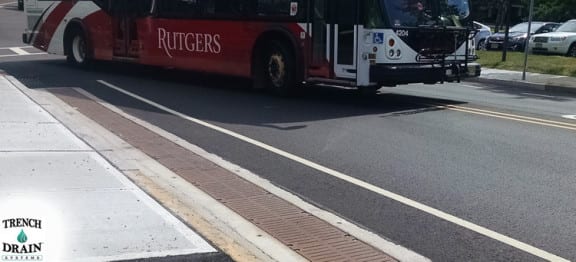Dear Construction Industry, don’t worry so much about heel-proof grates!
Architects and contractors come to me all the time looking for trench drains – but with a catch! The grates need to be heel-proof. As in, no openings wider than .25 inches in the direction of traffic.
But let’s get real here.
1. Heel-proof grates are not the same as ADA grates.
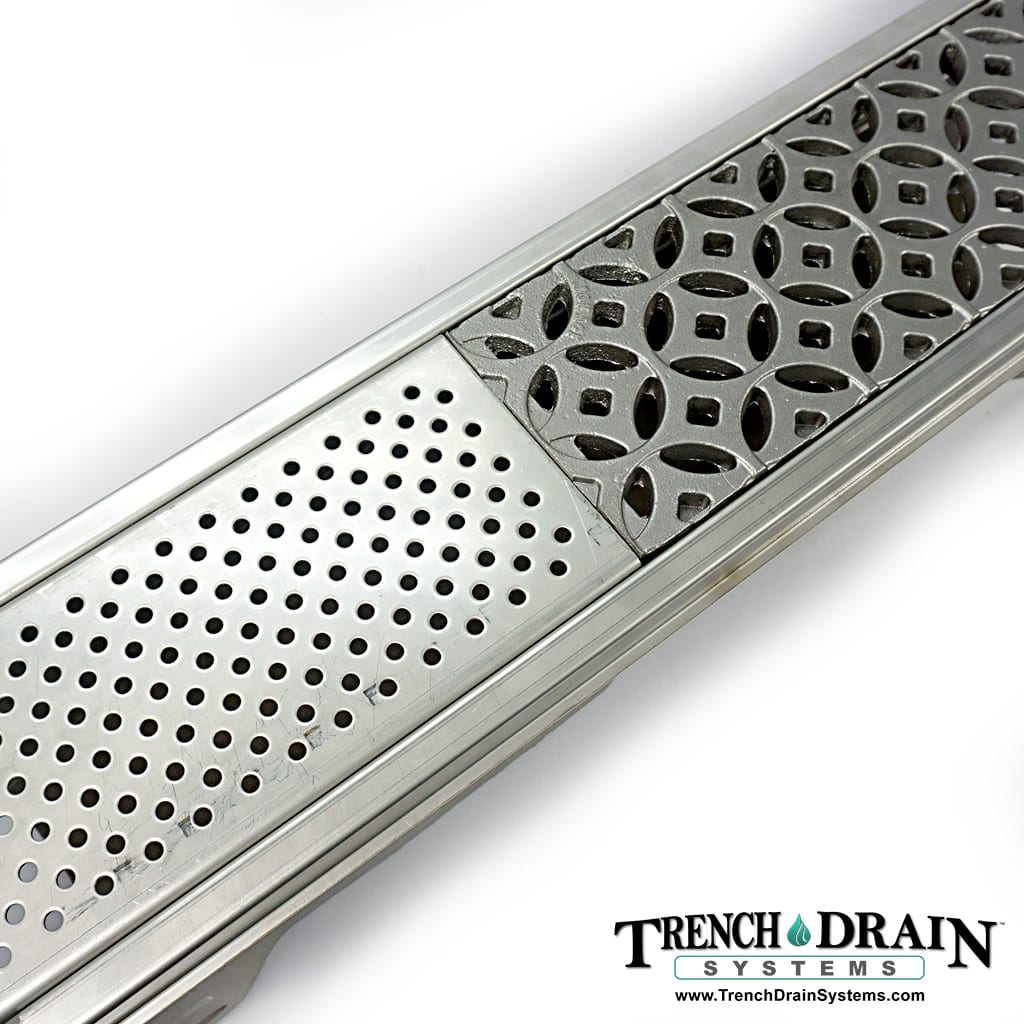
The Americans with Disabilities Act (ADA) is a wonderful piece of legislation that improved daily life for millions of Americans. It did not, however, specify that grate openings must be .25 inches wide or less.
According to the 2010 Standards for Accessible Design, all government services, public accommodations, commercial facilities and transportation hubs must comply with the ADA. For the runoff world (specifically, trench drain) that means two things:
- Openings shall be ½” width maximum
- Long dimension of the opening shall be perpendicular to traffic.
The origin of “heel-proof” grates comes from the American Society of Mechanical Engineers’ (ASME) standardizing specification: A112.6.3.
A grate designed to resist entry of high-heeled shoes, in which the maximum grate hole size in least direction shall be 5/16 in. (8mm)
2. Heel-proof grates can restrict flow.
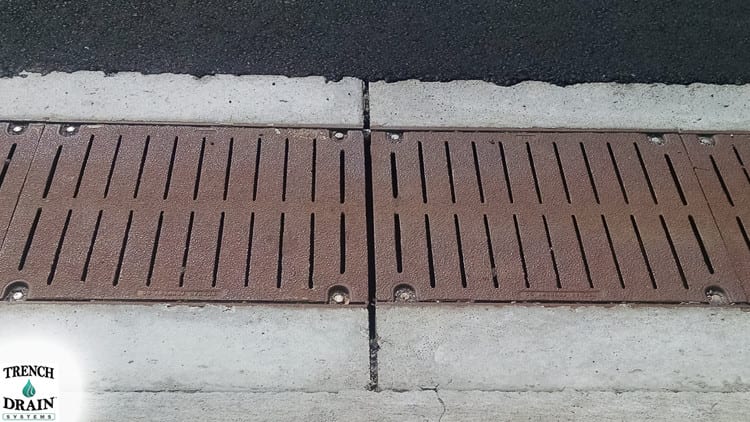
Don’t plan well enough and heel-proof grates will complicate your project.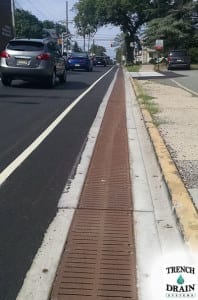
You can’t catch the same water with less open area. To combat the effect, you need to make up for it. The only way to do this effectively is by widening the drain, which increases material costs and makes the drain more intrusive.
Even wide grates can be set back by narrow openings. Just check the remodel of George Street in New Brunswick, NJ. At a plateau between much of College Avenue campus and the river, the stretch of George Street by the river dorms is one of the most sodden places on campus. Gathering water broke up the road and made rainy weather hazardous.
The engineers made up for the narrow openings by installing trench drain on either side of the road all the way down George Street.
I see similar trench drain setups at the entrances to parking lots all the time. Usually the grates are spaced with more open area. I wonder which one is more effective.
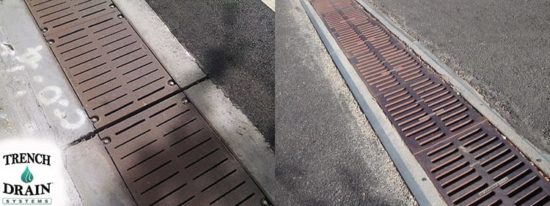
3. ADA compliant grates are not a trip hazard. Don’t worry about lawsuits.
Heel safe grates are a result of an overly litigious society, and for that reason only I find them practical. Nobody wants a lawsuit.
Keep in mind that many trench drains are already kept out of the beaten path to preserve looks. Sidewalk drains, courtyards and entryway drains are the only ones that see enough regular traffic to pose a problem.
Outside of an early 2000’s romantic comedy called The Wedding Planner, I have never seen a woman get her heel stuck in a drainage grate. And it was actually a manhole cover. See the scene below:
Parking garages, maintenance bays and other non-public commercial areas should not be concerned with heel safe grates. Durable grates? Yes. Non-slip grates? Absolutely.
Commercial trench drains should be firstly concerned with rapidly evacuating runoff and solvents – yet I’ve been asked for heel-proof options before. Realistically, who wears high heels to a fire station?
But for those who need it – or just think they do – heel proof grates are available in just about every size and material. Trust me. I sell them for a living.

